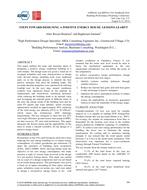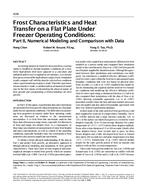Click here to purchase
This paper presents an energy performance study of a novel solar thermal-powered heating, cooling and hot water system integrated with latent heat thermal energy storage (LHTES) by applying the system to cities in different ASHRAE climate zones across the United States. The study was carried out through calculations and comparisons of energy demands of home space heating, cooling and hot water loads; daily solar harvest; and auxiliary heat supply. In addition, a design method was implemented to size an LHTES system and solar collector for operation in different climate zones. Subject cities were selected randomly from seven ASHRAE climate zones across the United States. Analysis of energy performance showed that solar thermal-powered heating, cooling and hot water system integrated with an LHTES system could contribute to building energy savings. Energy savings were evaluated when a solar collector was coupled with an LHTES system and when only a solar collector was used. For example, an LHTES system in Miami, FL, selected from ASHRAE Climate Zone 1, was found to save about 67.72% of energy compared with a system without solar collectors or an LHTES, while the system with only a solar collector saves about 38.69%. An LHTES system in Duluth, MN, selected from ASHRAE Climate Zone 7, was found to save about 57.96% of residential building energy. When only a solar collector is used, energy savings is about 29.56%. Overall, this study demonstrates the benefits of a solar thermal-powered heating, cooling and hot water system integrated with latent heat thermal energy storage to minimize overall auxiliary fuel demand in residential buildings across different climate zones in the United States.
Citation: 2020 Virtual Conference Papers
Product Details
- Published:
- 2020
- Number of Pages:
- 9
- Units of Measure:
- Dual
- File Size:
- 1 file , 1.1 MB
- Product Code(s):
- D-VC-20-C032


